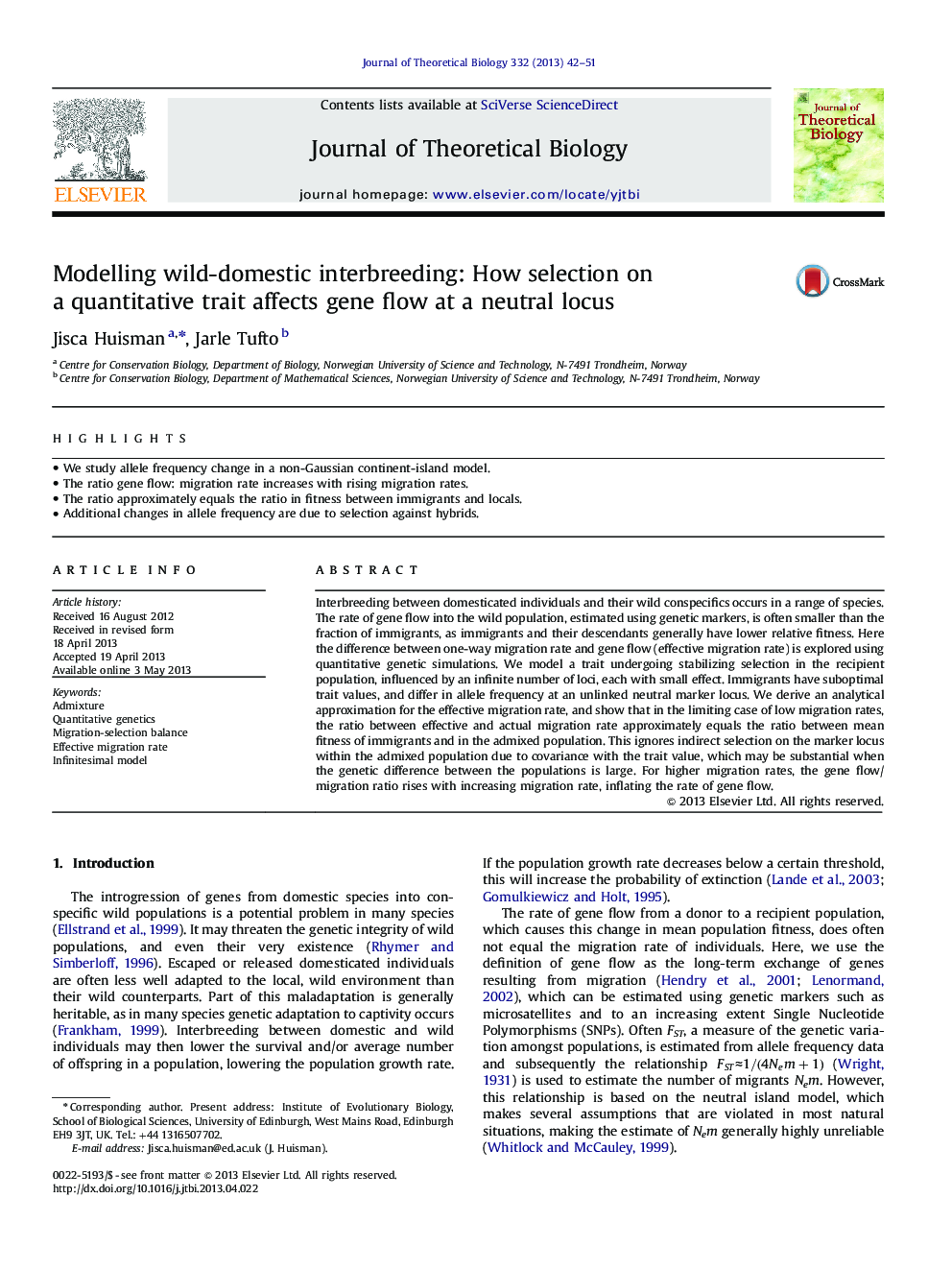| Article ID | Journal | Published Year | Pages | File Type |
|---|---|---|---|---|
| 4496332 | Journal of Theoretical Biology | 2013 | 10 Pages |
•We study allele frequency change in a non-Gaussian continent-island model.•The ratio gene flow: migration rate increases with rising migration rates.•The ratio approximately equals the ratio in fitness between immigrants and locals.•Additional changes in allele frequency are due to selection against hybrids.
Interbreeding between domesticated individuals and their wild conspecifics occurs in a range of species. The rate of gene flow into the wild population, estimated using genetic markers, is often smaller than the fraction of immigrants, as immigrants and their descendants generally have lower relative fitness. Here the difference between one-way migration rate and gene flow (effective migration rate) is explored using quantitative genetic simulations. We model a trait undergoing stabilizing selection in the recipient population, influenced by an infinite number of loci, each with small effect. Immigrants have suboptimal trait values, and differ in allele frequency at an unlinked neutral marker locus. We derive an analytical approximation for the effective migration rate, and show that in the limiting case of low migration rates, the ratio between effective and actual migration rate approximately equals the ratio between mean fitness of immigrants and in the admixed population. This ignores indirect selection on the marker locus within the admixed population due to covariance with the trait value, which may be substantial when the genetic difference between the populations is large. For higher migration rates, the gene flow/migration ratio rises with increasing migration rate, inflating the rate of gene flow.
